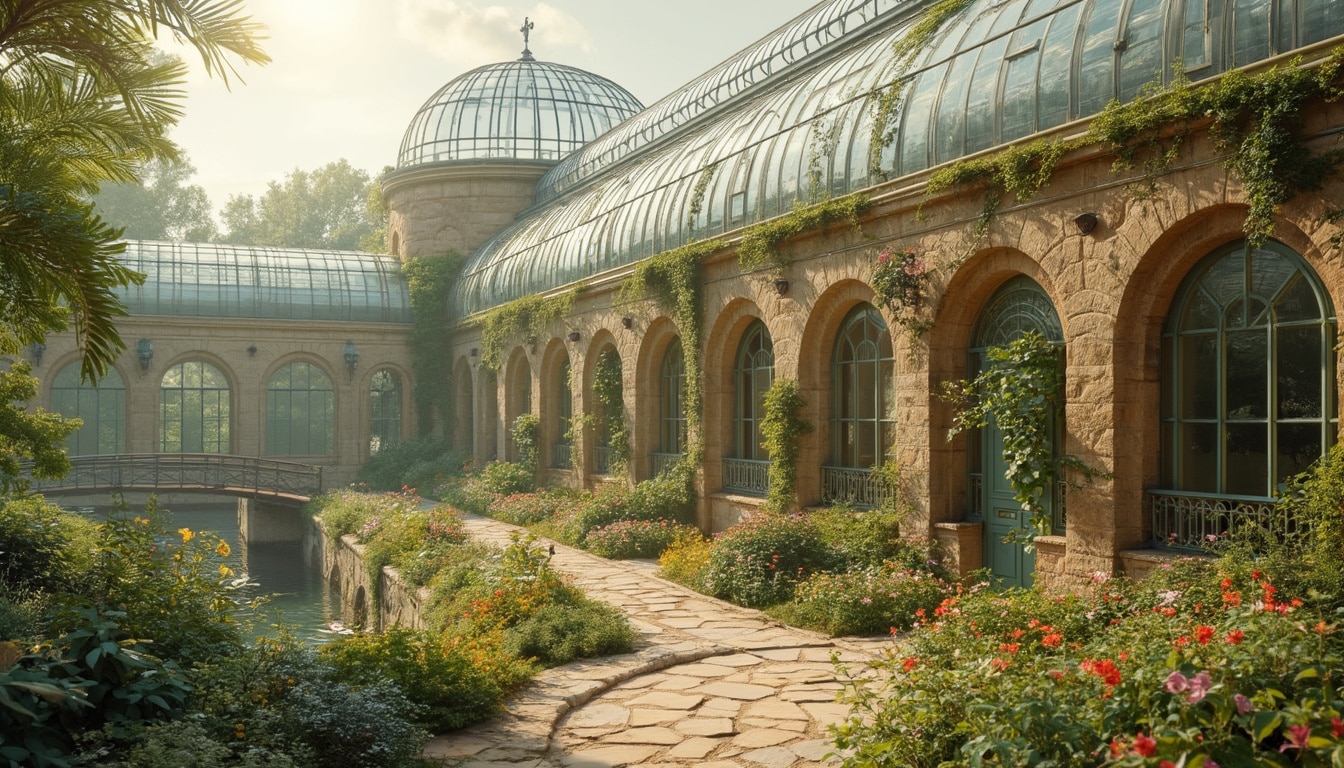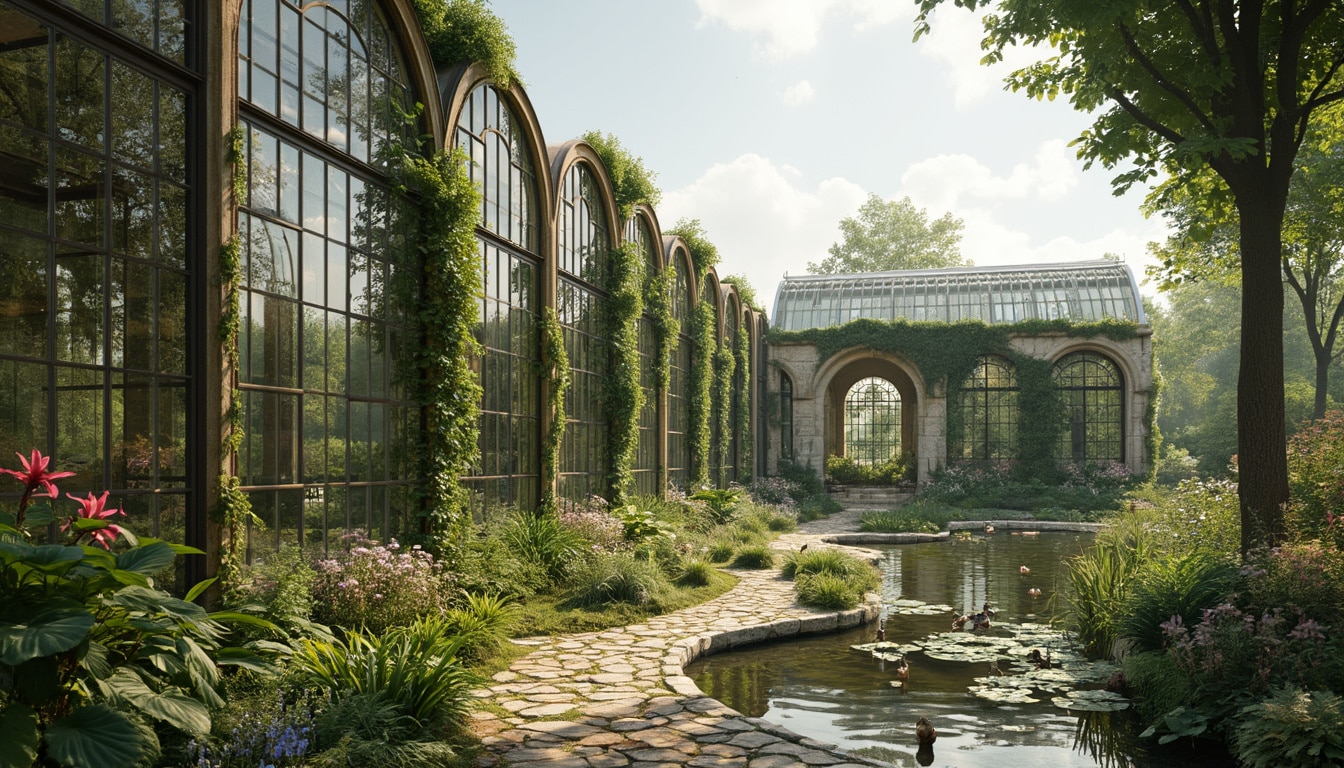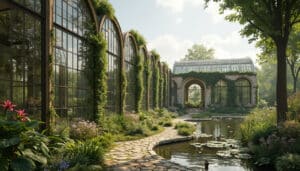Imagine strolling through a 19th-century greenhouse, where every glass pane whispers secrets of the past.
Here, tradition meets innovation in a dance as delicate as the flowers they shelter.
Welcome to the world of Serre Ancienne Guillaume Durost, where history is not just preserved but brilliantly reimagined.
Nestled in the heart of Limoges, Serre Ancienne breathes new life into old structures, seamlessly blending meticulous restoration with cutting-edge technology. Each project is a testament to their dedication, honoring the architectural heritage of the 19th century while embracing the needs of today. From using 3D printing and laser welding to implementing sustainable practices, they ensure every greenhouse stands the test of time both aesthetically and environmentally. Under Guillaume Durost’s leadership, the team navigates the delicate balance between preserving original craftsmanship and integrating modern advancements. This commitment not only revives historic buildings but also sets a benchmark for ecological responsibility in restoration projects. As a result, Serre Ancienne’s creations are more than just structures—they are living, breathing pieces of art that continue to inspire and enrich our communities.

Table of contents
ToggleRevitalizing ancient greenhouses: blending heritage with innovation
The charm of ancient greenhouses lies not just in their elegant ironwork and timeless glass structures, but also in the stories they embody. These architectural gems from the 19th century are more than just botanical havens; they are testaments to a bygone era of craftsmanship and design. Today, organizations like Serre Ancienne are breathing new life into these historical structures, marrying preservation with cutting-edge innovation to ensure their legacy endures for future generations.
How does innovation enhance the restoration of architectural heritage?
Restoring architectural heritage is a delicate balance between maintaining historical accuracy and incorporating modern technologies. Innovation plays a pivotal role in this process, providing tools and techniques that respect the original design while addressing contemporary challenges. For instance, 3D printing and laser welding allow restorers to replicate intricate details with precision, minimizing visible alterations and preserving the authenticity of the structure.
Moreover, digital modeling software enables detailed analysis and planning, ensuring that every restoration project is meticulously executed. This fusion of old and new not only preserves the aesthetic integrity of ancient greenhouses but also enhances their functionality and sustainability. By leveraging innovation, restorers can overcome the limitations of traditional methods, bringing a new dimension to heritage conservation.
What are the challenges in preserving historical greenhouses with modern techniques?
Preserving historical greenhouses presents a unique set of challenges. One of the primary obstacles is maintaining the structural integrity of these aging buildings while implementing modern enhancements. The use of original materials is often limited by their availability and cost, necessitating the creation of accurate replicas using advanced technologies.
Additionally, integrating contemporary systems such as climate control and energy-efficient lighting requires careful planning to avoid disrupting the original design. These interventions must be subtle and reversible, ensuring that the greenhouse can be returned to its original state if needed. Balancing the preservation of historical elements with the installation of new technologies demands both expertise and ingenuity from restoration teams.
How does ecological sustainability factor into the restoration of ancient greenhouses?
Ecological sustainability is a cornerstone of modern restoration practices. By opting to restore rather than reconstruct ancient greenhouses, restoration projects significantly reduce resource consumption and minimize their carbon footprint. The longevity of materials like steel and glass ensures that these structures remain functional for decades, if not centuries, without the need for frequent replacements.
Serre Ancienne exemplifies this commitment to sustainability by employing eco-friendly practices throughout their restoration process. From using recycled materials wherever possible to implementing energy-efficient systems, their approach ensures that the environmental impact is kept to a minimum. This dedication not only preserves the physical heritage but also aligns with a broader vision of environmental responsibility.
In what ways can modern technology transform the future of greenhouse restoration?
The future of greenhouse restoration is poised to be revolutionized by advancements in technology. Innovations such as augmented reality (AR) and virtual reality (VR) offer new ways to visualize restoration projects, allowing stakeholders to experience the transformation before it occurs. These technologies enhance collaboration and decision-making, ensuring that every aspect of the restoration is carefully planned and executed.
Furthermore, advancements in material science are leading to the development of more durable and sustainable building materials. These new materials not only replicate the appearance of traditional components but also offer enhanced performance and longevity. As technology continues to evolve, the possibilities for restoring and reimagining architectural heritage are virtually limitless.
What role does community engagement play in heritage restoration projects?
Community engagement is essential in the restoration of architectural heritage. Involving local communities ensures that restoration projects are culturally relevant and supported by those who value the heritage. Community members often provide valuable insights and historical knowledge that can enhance the authenticity of the restoration process.
Organizations like Serre Ancienne actively engage with their communities through workshops, public tours, and educational programs. This not only fosters a sense of ownership and pride among residents but also raises awareness about the importance of preserving architectural heritage. By fostering strong community ties, restoration projects become collaborative efforts that honor both the past and the present.
Can restoration projects contribute to economic development?
Absolutely. Restoration projects, particularly those involving historical greenhouses, can significantly boost local economies. These projects often create jobs in construction, design, and tourism, fostering economic growth within the community. Moreover, restored greenhouses can become attractions in their own right, drawing visitors and enthusiasts who contribute to the local economy.
In addition, restored structures often serve as venues for events, workshops, and exhibitions, generating revenue and enhancing the cultural vibrancy of the area. The investment in restoration not only preserves history but also creates opportunities for economic diversification and resilience.
How does Serre Ancienne exemplify the fusion of tradition and innovation?
Serre Ancienne stands at the forefront of blending tradition with innovation in the realm of greenhouse restoration. Their meticulous approach ensures that the original architectural elements are preserved with the utmost care, while innovative techniques are seamlessly integrated to enhance functionality and sustainability.
Founder Guillaume Durost emphasizes the importance of respecting historical techniques while embracing modern advancements. « We are at the crossroads of two worlds: honoring history and innovating for the future, » he explains. This philosophy is evident in every project Serre Ancienne undertakes, where traditional craftsmanship meets state-of-the-art technology to create stunningly restored greenhouses that honor their past and look toward the future.
What are the ecological benefits of restoring versus rebuilding?
Restoring historical greenhouses offers substantial ecological benefits compared to rebuilding from scratch. Restoration minimizes waste by preserving existing materials, reducing the need for new resources and lowering the overall environmental impact. This approach aligns with sustainable development goals, promoting the efficient use of resources and reducing landfill waste.
Furthermore, restored structures often incorporate modern energy-efficient systems that lower operational costs and decrease energy consumption. By enhancing the thermal performance and integrating renewable energy sources, restoration projects contribute to a greener future. This commitment to sustainability not only benefits the environment but also ensures that these greenhouses remain viable and functional for generations to come.
How does Serre Ancienne integrate modern technologies in their restoration projects?
Serre Ancienne leverages a range of modern technologies to enhance their restoration projects. Technologies such as 3D printing and laser welding allow for precise replication of original components, ensuring that restorations are both accurate and durable. These tools enable the creation of intricate designs that would be challenging to achieve with traditional methods alone.
Additionally, advanced modeling software is used to plan and visualize restoration efforts, allowing for better coordination and efficiency. The use of digital tools ensures that every aspect of the restoration is carefully considered and executed, resulting in high-quality outcomes that honor the original craftsmanship while embracing modern advancements.
What lessons can be learned from Serre Ancienne’s restoration approach?
The approach adopted by Serre Ancienne offers valuable lessons for anyone involved in restoration projects. Their commitment to blending tradition with innovation showcases the importance of respecting historical integrity while embracing modern solutions. This balance ensures that restorations are both authentic and functional, meeting the needs of contemporary users without compromising heritage.
Another key lesson is the significance of community involvement. By engaging with local communities, Serre Ancienne ensures that their projects are culturally relevant and supported by those who value the heritage. This inclusive approach fosters a sense of ownership and pride, contributing to the long-term success and sustainability of restoration efforts.
How can other industries learn from greenhouse restoration?
Greenhouse restoration offers insights that are applicable across various industries. The meticulous attention to detail and dedication to preserving original elements can inspire sectors such as architecture, design, and manufacturing to prioritize quality and authenticity. Additionally, the integration of modern technologies in restoration projects demonstrates how traditional practices can be enhanced with innovation to improve efficiency and outcomes.
The emphasis on sustainability in restoration can also serve as a model for other industries aiming to reduce their environmental impact. By adopting similar eco-friendly practices, businesses can achieve a balance between preserving their heritage and embracing sustainable growth. The success of Serre Ancienne highlights the potential for industries to evolve by respecting their past while innovating for the future.
Where can you learn more about innovation in restoration?
For those interested in exploring the intersection of innovation and heritage restoration, numerous resources are available. Websites like Innovanews offer insights into how various industries are leveraging technology to drive progress. Additionally, articles on topics such as sustainable practices, technological advancements, and community engagement provide valuable knowledge for those looking to delve deeper into the subject.
Moreover, initiatives like La Serre, a new incubator for entrepreneurs and startups, highlight the importance of fostering innovation in preserving and revitalizing architectural heritage. By staying informed and engaged with these resources, individuals and organizations can contribute to the ongoing dialogue surrounding heritage conservation and technological integration.













